Unlocking your green thumb and getting started with gardening doesn’t have to be costly or intimidating. There are several gardening concepts for beginners that don’t require any upfront cash investment. In fact, gardening provides numerous benefits, including the satisfaction of growing your own food, saving money on groceries, and becoming more self-sufficient.
Here are some gardening concepts that are perfect for beginners:
Key Takeaways:
- Gardening provides numerous benefits, including growing your own food, saving money, and becoming more self-sufficient.
- There are several gardening concepts for beginners that don’t require any upfront cash investment.
- Some beginner gardening concepts include saving seeds, growing new plants from cuttings, composting, foraging for seeds in the wild, and planning your garden layout.
Starting with Seed Saving
One idea is to learn how to save seeds from the foods you already eat, such as bell peppers, tomatoes, and watermelon. Saving seeds is a cost-effective way to grow the plants you already love to eat. To save seeds, remove them from mature fruits or vegetables and let them dry for two weeks. Once they’re dry, store them in a cool, dry place until you’re ready to plant them.
Another way to start your garden is by growing new plants from cuttings. Soft herbs like basil are perfect for this method. Cut off a section of the plant just above a stem joint and place it in a glass of water. Wait a few weeks until roots develop and then transfer the cutting to soil.
If you’re feeling adventurous, you can also try foraging for seeds in the wild. Identify plants that you love and research how to find and grow their seeds. This can be a fun and rewarding activity for those who love a challenge.
Composting is also an important part of gardening. It’s a great way to create nutrient-rich soil without spending money on topsoil or mulch. You can start composting by using organic materials like vegetable-based food scraps, coffee grounds, and lawn clippings. You can make your own composting bins using free pallets or purchase composting bins from stores. To maintain your compost, turn it every few days to aerate it and speed up the composting process.
Once you have saved seeds and composted, you can start sprouting baby plants. Use rich compost to fill small containers like egg cartons or repurpose old cans and plastic bottles. Place dried seeds on a damp paper towel and put them in a clear plastic bag in a warm, sunny location. Within a week, you should see tiny sprouts, and then you can press them into the soil. Remember to keep the seedlings warm and moist, covering them with clear plastic and spraying the soil with water. Thinning the plants as they grow will provide more room for the others to grow, and you can add the thinned plants back to your compost bin.
Overall, starting your own garden doesn’t have to be complicated or expensive. By saving seeds, composting, and sprouting baby plants, you can create a thriving garden without breaking the bank. Get started today and experience the satisfaction of growing your own food and connecting with nature.
Growing New Plants from Cuttings
Another concept is growing new plants from cuttings, which works well with soft herbs like basil. This method is an easy and cost-effective way to expand your garden and will provide you with new plants identical to the parent plant.
To start, find a healthy parent plant and use a sharp, clean knife or shears to cut a stem just above a leaf joint at a 45-degree angle. Remove any leaves from the lower half of the cutting, leaving only a few at the top.
Fill a glass or jar with water and place the cutting in it, making sure the bottom end stays submerged. Change the water every few days and keep the cutting out of direct sunlight. After a few weeks, roots should start to grow. Once the roots are about an inch or two long, you can transplant the cutting into soil.
When planting, dig a small hole and insert the cutting, making sure to cover the roots with soil. Water the soil lightly and keep the plant in a warm, sunny spot. With proper care, your new plant should grow quickly and provide delicious fresh herbs for your recipes.
Remember that this method is best for soft herb species like basil, or fresh clippings from woody herbs like sage. It may not work for all plants, so it is essential to do some research before attempting to grow new plants from cuttings.
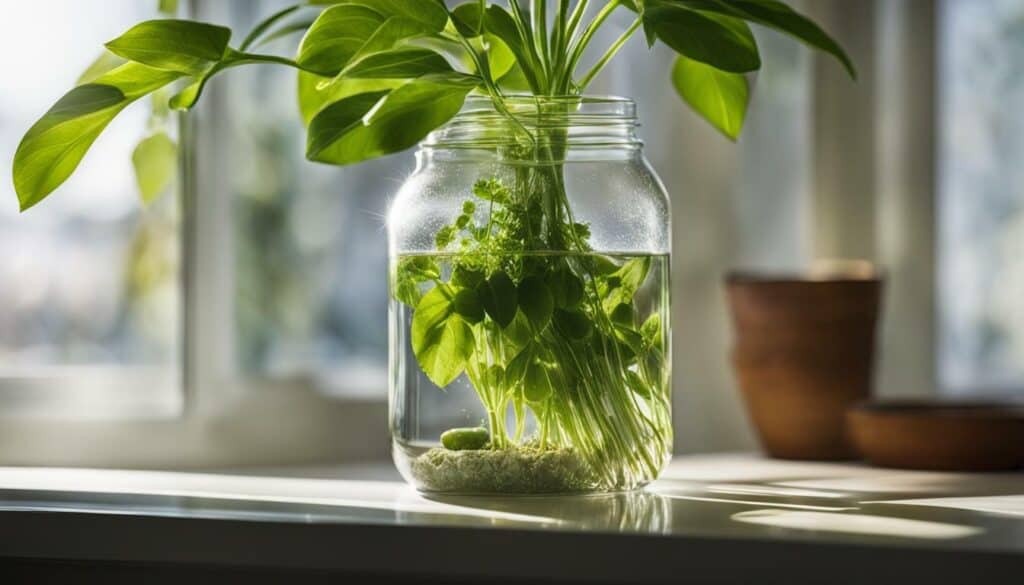
In addition to growing new plants from cuttings, you can also save seeds from the foods you already eat or collect wild seeds to obtain new plants. Composting is another crucial aspect of gardening that creates nutrient-rich soil. Vegetable-based food scraps, unbleached paper towels and coffee filters, coffee grounds, lawn clippings, and brush and debris can all be used to create your own compost.
Once your garden is established, regular watering, weeding, pruning, and fertilization are essential to maintain healthy plants. Remember to harvest your produce when it is ready, and enjoy the fruits of your labor. Gardening provides numerous benefits, including fresh produce, physical and emotional well-being, and a deeper connection with nature.
Foraging for Seeds in the Wild
As a beginner gardener, you might feel overwhelmed by the various options available to start your garden. However, foraging for seeds in the wild is a cost-effective and rewarding way to begin. In addition to saving seeds from the foods you already eat and growing new plants from cuttings, gathering wild seeds allows you to connect with nature and cultivate the skills needed to create a thriving garden.
You can also find seeds in the wild by identifying plants you love and researching how to gather their seeds. For example, if you enjoy the taste of bell peppers, tomatoes, or green beans, saving their seeds is a simple process of removing the seeds from mature fruit or vegetables, drying them for at least two weeks, and storing them in a cool, dry place. Another method for growing new plants is taking cuttings from soft herbs like basil or woody herbs like rosemary and placing them in water until roots develop.
However, it’s important to be mindful of the plants and natural areas you gather from. Make sure to identify the plants correctly, using identification apps or websites if necessary, and research how to collect and grow those seeds. Some plants may be protected or invasive, and it’s important to respect the environment while foraging for seeds.
By learning these techniques and gathering wild seeds for your garden, you can start gardening without spending money and develop valuable skills that will serve you well in the long term.
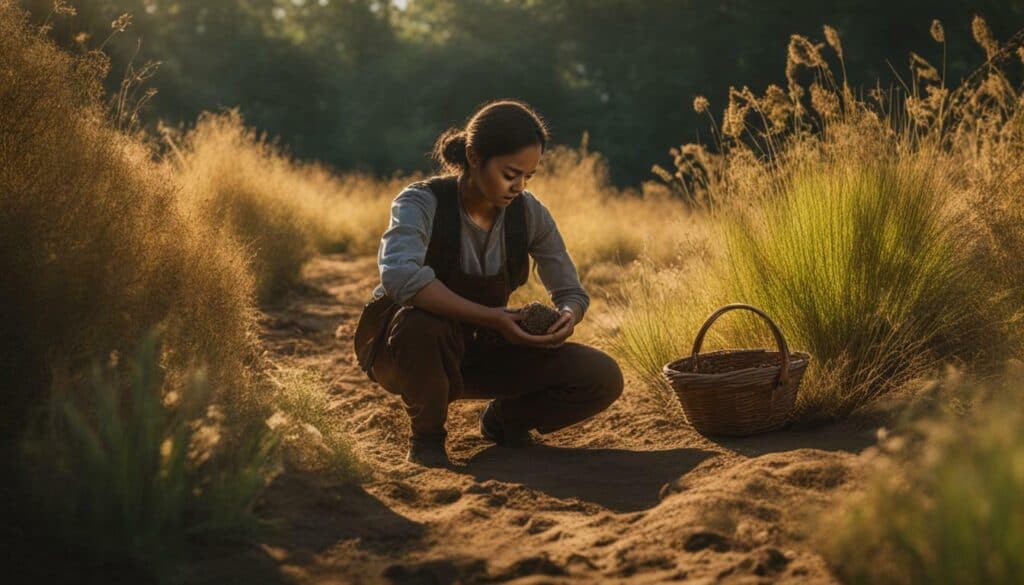
Building a Composting Bin
Composting is another important aspect of gardening, as it provides nutrient-rich soil for your plants. However, purchasing composting bins can cost under $200 at hardware stores, which can be expensive for those with bigger gardening dreams. One great option is to build a DIY composting bin using free pallets.
The first step is to find free pallets from local businesses or on websites like Craigslist. Once you have the pallets, you can start building the bin by securing three pallets together to form the walls of the bin. The fourth pallet will be used as the lid. For additional stability, secure the pallets together with screws or nails.
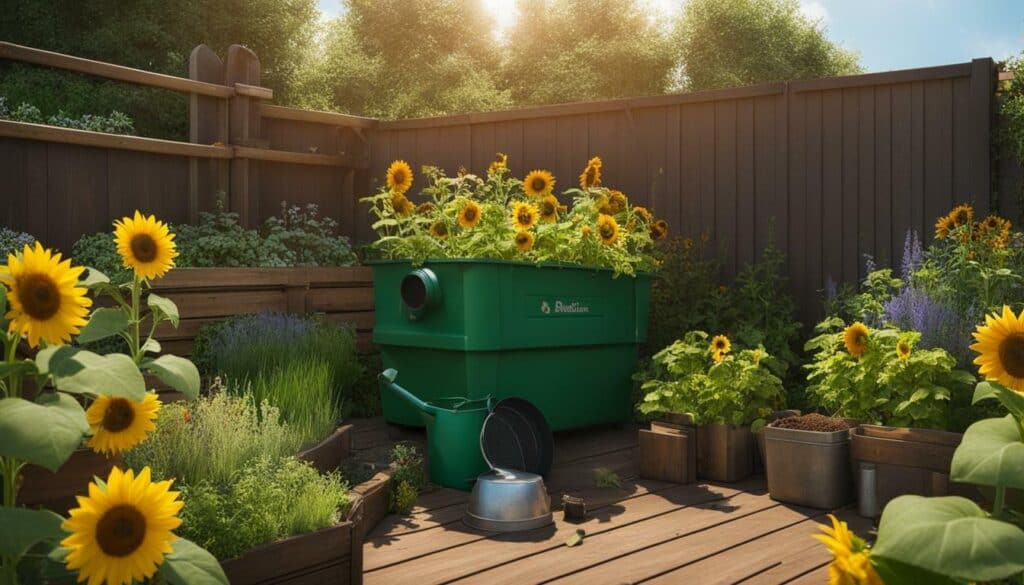
It is important to know what materials can be composted, such as vegetable-based food scraps, coffee grounds, and lawn clippings, while avoiding meat products and animal waste. To ensure proper decomposition, it is necessary to turn the composting bin every two to three days for aeration.
Composting not only benefits your garden by providing nutrient-rich soil, but it also helps reduce methane emissions and your carbon footprint. By practicing sustainable gardening, we can make a positive impact on both our gardens and the environment.
Planning Your Garden Layout
Choosing the right soil, planning your garden layout, and selecting suitable plants are also crucial for successful gardening. When it comes to designing your garden, there are several factors to consider, including the size and shape of your yard, the amount of sunlight it receives, and the type of soil you have.
The first step in planning your garden layout is to determine which plants will thrive in your specific climate and soil conditions. Research the best plants for your area and make a list of those that will grow well in your garden.
Once you’ve selected your plants, it’s time to choose the right location for your garden. Look for an area that receives plenty of sunlight throughout the day, as most plants require at least six hours of direct sunlight to grow properly.
You should also consider the type of soil in your garden. If you have heavy clay soil, you may need to amend it with organic matter like compost or peat moss to improve drainage and fertility. On the other hand, if you have sandy soil, you may need to add compost or other organic matter to improve water retention.
When planning your garden layout, it’s important to consider the mature size of your plants. Be sure to leave enough space between each plant so that they have room to grow and spread out.
In addition to selecting the right plants and location, you should also consider the overall design of your garden. Think about the types of plants you want to grow and how they will complement each other. You may also want to add decorative elements like trellises, sculptures, or water features to enhance the visual appeal of your garden.
By following these tips and choosing the right soil, plants, and garden layout, you’ll be on your way to creating a beautiful and thriving garden.
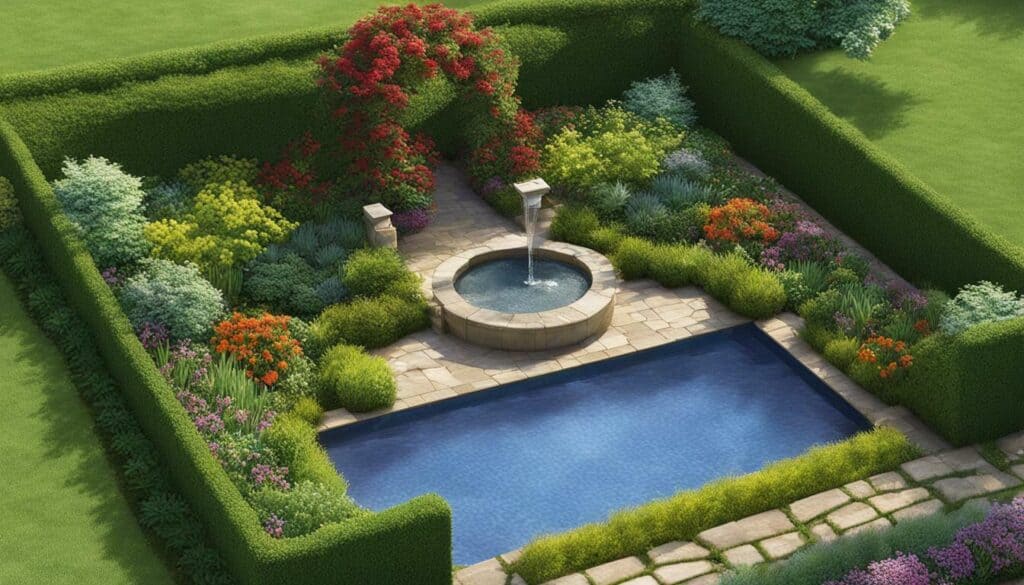
Essential Gardening Techniques
Maintaining your garden through watering, fertilizing, and pruning is essential. These gardening techniques help keep your plants healthy and productive. Proper watering ensures that plants receive enough moisture without becoming waterlogged, which can lead to root rot and other issues. Fertilizing provides necessary nutrients for plants to grow and produce abundant fruits and vegetables. Pruning removes dead or diseased plant material, promotes new shoots and growth, and controls the spread of diseases.
When it comes to watering, it is important to water deeply but infrequently, allowing the soil to dry out slightly between waterings. This encourages plants to develop deep root systems, which can help them access water and nutrients more effectively. Fertilizing should be done regularly throughout the growing season, using a balanced fertilizer that includes nitrogen, phosphorus, and potassium. Organic options, such as compost and manure, are also effective.
Pruning should be done regularly to remove dead or diseased plant material, along with any branches that are rubbing against each other or growing at odd angles. It is also important to prune fruit trees and shrubs to encourage the growth of new fruit-bearing wood. When pruning, use sharp, clean pruning shears to avoid damaging the plant, and make cuts at a 45-degree angle just above a bud or leaf node.
Overall, essential gardening techniques are crucial for maintaining a healthy and productive garden. By watering, fertilizing, and pruning regularly, you can ensure your plants thrive and produce abundant fruits and vegetables.

The Thrill of Harvesting
Harvesting the fruits of your labor is a rewarding experience. It offers a sense of fulfillment and accomplishment when you can enjoy the results of your hard work. Seeing your plants grow and mature, ready to be harvested, can be a thrilling experience, whether it’s vegetables, fruits, or herbs.
Harvesting your produce also has numerous benefits. Not only does it provide you with fresh and nutritious food, but it also allows you to become more self-sufficient and reduce your carbon footprint. Gardening at home can be a great way to involve the whole family in a fun and meaningful activity.
To experience the joy of harvesting, it’s important to understand the basics of gardening. Starting with seed saving and growing new plants from cuttings, you can expand your gardening skills without spending a dime. By composting and providing proper care, you can ensure the health and vitality of your plants, leading to a bountiful harvest.
The thrill of harvesting extends beyond just the physical act of picking your produce. It’s about appreciating the beauty and magic of nature. Gardening offers a unique opportunity to connect with the natural world and gain a deeper understanding of its processes. By breaking free from preconceived notions and exploring different methods and techniques, you can develop your green thumb and create a thriving garden.
So, get ready to embark on the exciting journey of harvesting and enjoy the fruits of your labor. Whether you have a small urban garden or a backyard oasis, gardening concepts and plant care tips can help you turn your garden ideas into a thriving reality. So put on your gardening gloves and let’s get started!
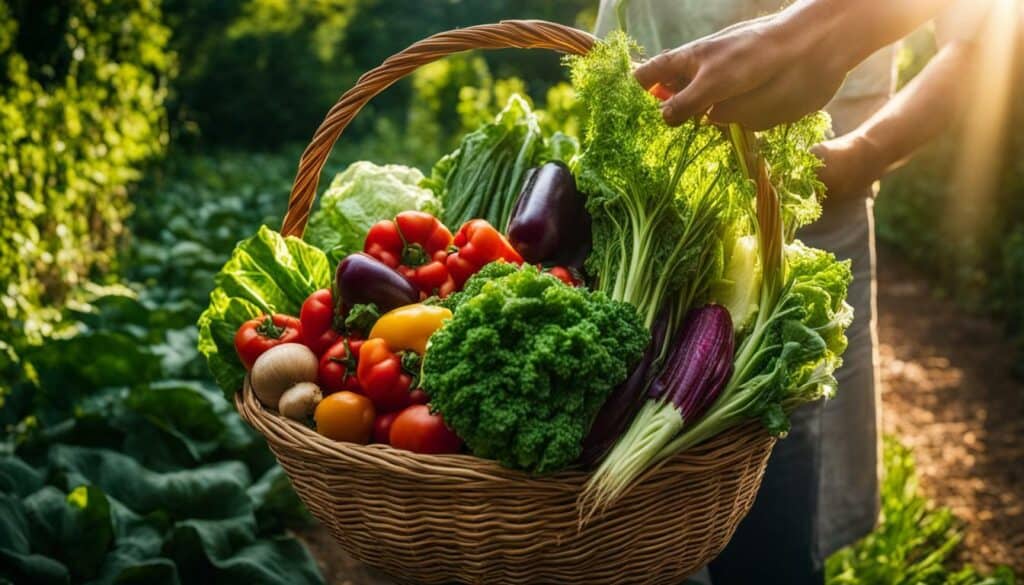
The Pleasure of Gardening
Overall, gardening is a pleasurable, fulfilling, and eco-friendly activity that offers physical and mental benefits. It is a way to connect with nature, appreciate its beauty, and create a sense of self-sufficiency by growing one’s own food. Organic gardening, sustainable gardening, container gardening, urban gardening, and backyard gardening are all unique and rewarding ways to enjoy the pleasures of gardening.
One of the benefits of gardening is the low upfront cost. Beginners can save seeds from the fruits and vegetables they already eat, grow new plants from cuttings, or gather wild seeds. Composting is another aspect of gardening that can be done with minimal cost by building composting bins from free pallets. By composting, individuals can transform organic materials into nutrient-rich soil for plant growth, reducing waste and benefiting the environment.
Starting a garden with saved seeds is a great, cost-effective option for beginners. Sprouting baby plants from saved seeds allows individuals to start their garden without spending money at a nursery. Planning and designing the garden layout, selecting suitable plants for the location and soil, and properly maintaining the garden are all essential steps in gardening at home.
Aside from providing fresh produce, gardening also offers numerous physical and mental health benefits. Spending time in nature and engaging in physical activity through gardening can improve overall well-being. Additionally, gardening can reduce stress, improve focus and patience, and provide a creative outlet through plant selection and garden design.
Breaking free from preconceived notions about gardening and experimenting with different methods and techniques is crucial for success. Finding joy in the process of gardening, relaxing in nature, and expressing creativity through plant choices and garden design are additional tips for maximizing the pleasure of gardening.
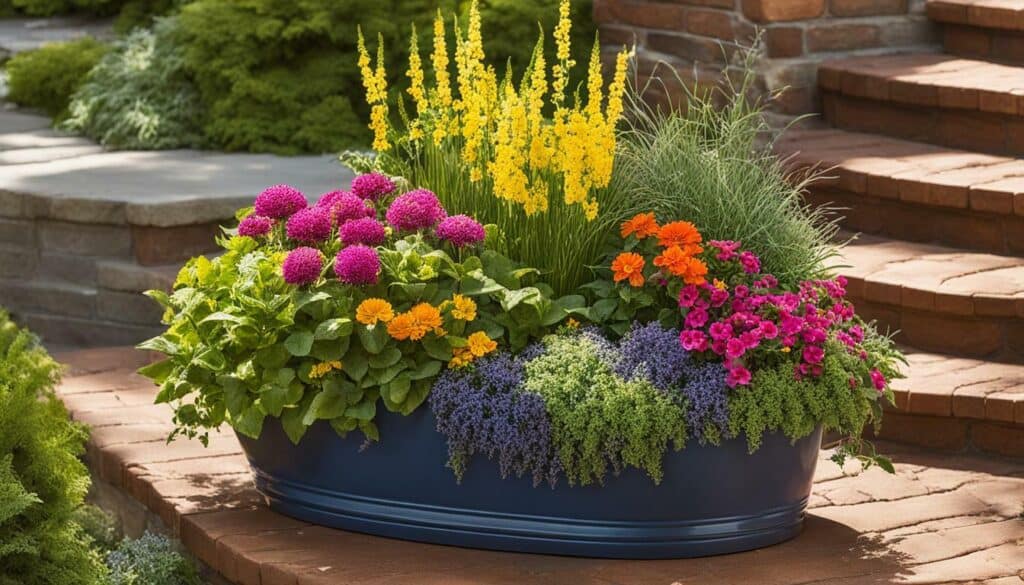
In conclusion, gardening is a sustainable, enjoyable, and beneficial activity that can be practiced by anyone. Whether it’s starting a backyard garden or container garden on a balcony, the pleasures of gardening are within reach. By following these concepts and tips, individuals can unlock their green thumb and enjoy the rewards of gardening.
Conclusion
In conclusion, diving into the fascinating world of gardening concepts can transform your backyard into a haven. Gardening is not only a cost-effective way to grow your own food and become more self-sufficient, but it also offers numerous physical and mental health benefits. By understanding the basics of plant care, selecting the right location and soil, and exploring different methods and techniques, you can create a successful garden that is both beautiful and functional.
Breaking free from preconceived notions about gardening and experimenting with different plants and designs can lead to a truly unique and fulfilling experience. Whether you are interested in organic gardening, sustainable gardening, urban gardening, container gardening, or backyard gardening, there is something for everyone in the world of gardening.
So why wait? Unlock your green thumb today and start enjoying the many rewards of gardening. Whether you are a seasoned pro or a beginner, there is always something new to learn and discover. Take the first step and start exploring gardening ideas and plant care tips today!
FAQ
Q: Can I save seeds from the foods I already eat?
A: Yes, you can save seeds from foods like bell peppers, tomatoes, and watermelon to grow new plants.
Q: How can I grow new plants from cuttings?
A: Soft herbs like basil can be easily propagated from cuttings. Simply take a healthy cutting, place it in water until roots develop, and then transfer it to soil.
Q: Can I find seeds in the wild?
A: Yes, you can identify plants you love and research how to gather their seeds in the wild.
Q: How can I build a composting bin?
A: You can build a composting bin using free pallets as a cost-effective option to create nutrient-rich soil for your plants.
Q: How important is planning my garden layout?
A: Planning your garden layout is crucial for successful gardening. Choose the right soil, select suitable plants, and create a layout that maximizes growth and aesthetics.
Q: What are some essential gardening techniques?
A: Essential gardening techniques include watering, fertilizing, and pruning to ensure healthy plant growth.
Q: What is the thrill of harvesting?
A: Harvesting the fruits of your gardening labor is a rewarding experience that brings a sense of accomplishment and satisfaction.
Q: Is gardening a pleasurable activity?
A: Yes, gardening is a pleasurable and fulfilling activity that offers physical and mental benefits, while also allowing you to connect with nature and enjoy the process.
What Can I Learn and Grow from Gardening 10?
Gardening enthusiasts can learn gardening tips and embark on a journey of personal growth with Gardening 10. By nurturing plants, individuals not only acquire knowledge about various gardening techniques but also develop patience, perseverance, and a deeper connection with nature. Gardening 10 offers an opportunity to cultivate both plants and personal growth simultaneously.
Source Links
- https://uyirorganic.farm/gardening-at-home/
- https://revivalist.com/gardening-ideas-for-beginners-to-develop-your-green-thumb-for-free/
- https://abmeyerwood.com/discover-the-magic-behind-having-a-green-thumb-break-free-from-preconceived-ideas-about-gardening/
- https://greenthumbgardeningsecrets.com/
- https://journeywithjill.net/gardening/2017/08/29/free-produce-seed-saving-hobby-gardener-beginners-garden-podcast/
- https://frugalfamilyhome.com/home/gardening/seed-saving
- https://www.gardendesign.com/seeds/saving.html
- https://extension.umaine.edu/gardening/manual/propagation/plant-propagation/
- https://thegardeningcook.com/plant-propagation-tips/
- https://www.homesandgardens.com/gardens/how-to-take-plant-cuttings
- https://practicalselfreliance.com/wild-seed-grain/
- https://outforia.com/what-is-foraging/
- https://www.gore-tex.com/blog/foraging-food-wild-plants
- https://www.thespruce.com/compost-bin-plans-4769337
- https://www.bhg.com/gardening/yard/compost/diy-compost-bin/
- https://www.goodhousekeeping.com/home/gardening/a20706669/how-to-build-compost-bin/
- https://www.almanac.com/over-20-vegetable-garden-layout-ideas
- https://www.homesandgardens.com/advice/how-to-plan-a-garden
- https://www.countryliving.com/gardening/garden-ideas/g746/garden-plans/
- https://www.gardendesign.com/how-to/
- https://www.bhg.com/gardening/yard/garden-care/gardening-tips-for-every-gardener/
- https://www.amazon.com/Essential-Gardening-Techniques-Step-Step/dp/1840000139
- https://www.finegardening.com/article/the-thrill-of-the-harvest
- https://ediblenutmeg.ediblecommunities.com/things-do/thrill-harvest-armstrong-court-community-garden
- https://www.gardendesign.com/seattle/orting-chase.html
- https://www.growingagreenerworld.com/the-pleasure-of-gardening-is-in-the-process/
- https://www.abebooks.com/Pleasure-Gardening-Designing-Small-Garden-Inspirational/30893532400/bd
- https://www.amazon.com/Pleasure-Gardening-Designing-Small-Garden/dp/1863023429
- https://www.daleharvey.com/in-the-garden/articles-of-interest/PACIFIC STEEL SUTTON PARK/Sutton Park Primary School Gardening Project/Page 5 – Conclusion.html
- https://amssummative.weebly.com/conclusions.html
- https://www.betterhealth.vic.gov.au/health/healthyliving/gardening-for-children

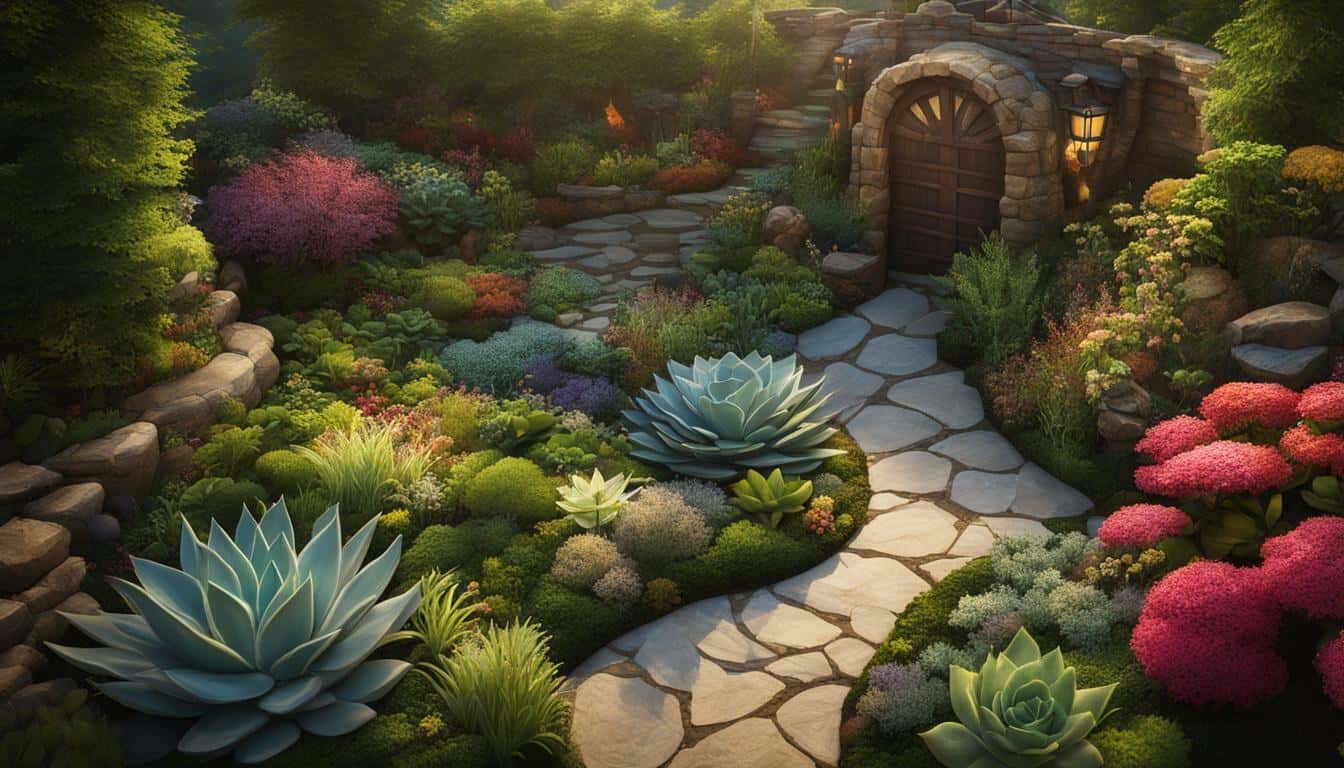



Leave a Reply